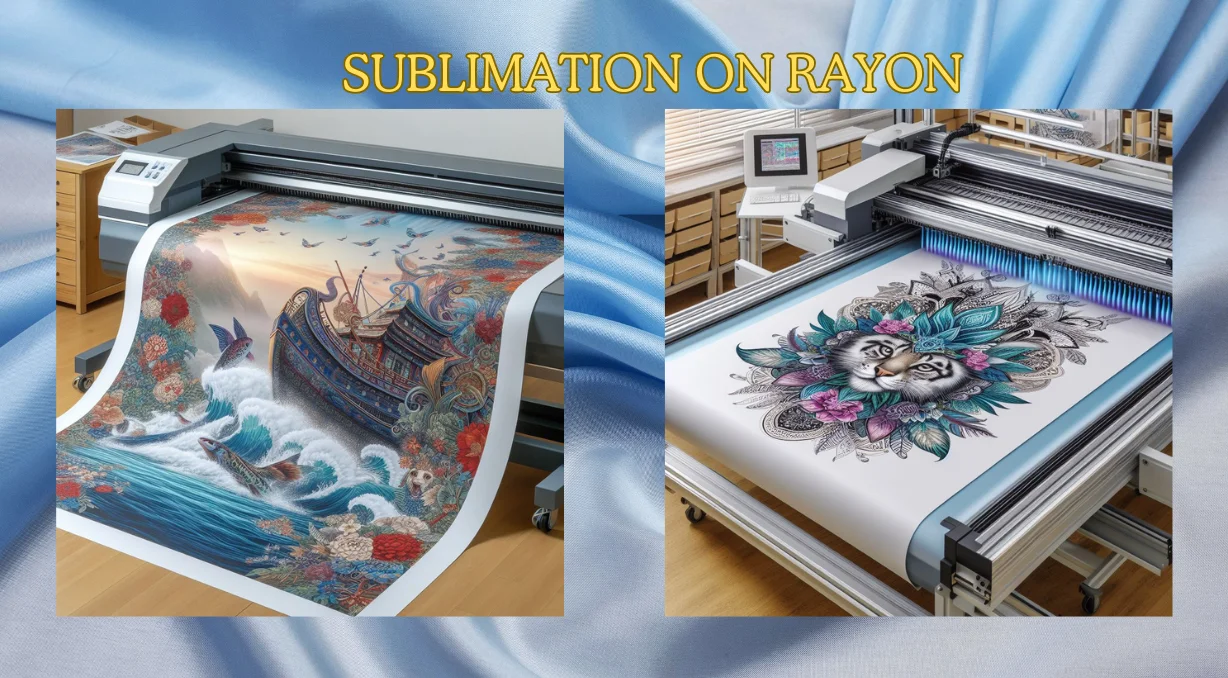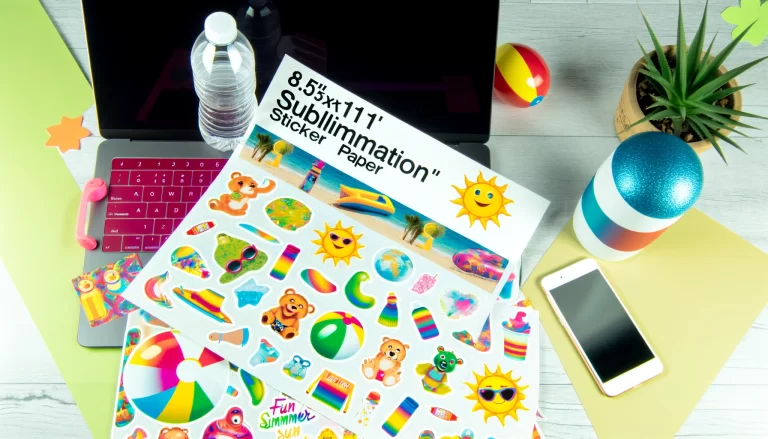Sublimation on Rayon: Unlocking the Secrets for Vibrant Prints
Rayon is a semi-synthetic fabric made from natural cellulose fibers. People love it because it’s soft, breathable, and drapes beautifully, which makes it a go-to for clothing and home décor.
The tricky part? Rayon doesn’t always play nice with sublimation. Its unique fiber makeup makes it more heat-sensitive, so you have to tweak your settings to avoid fading or scorching. Still, many printers experiment with rayon because of its luxurious feel and the chance to create sharp, detailed designs when it works.
Stick to at least 65% polyester, test your settings, and you’ll get prints that are vibrant, durable, and soft to wear.
- 100% rayon? ❌ Not ideal, prints fade and scorch.
- Rayon-poly blend (65–70% polyester)? ✅ Works well, vibrant, longer lasting.
- Best settings: 375–385°F, 30–45 sec, light-medium pressure.
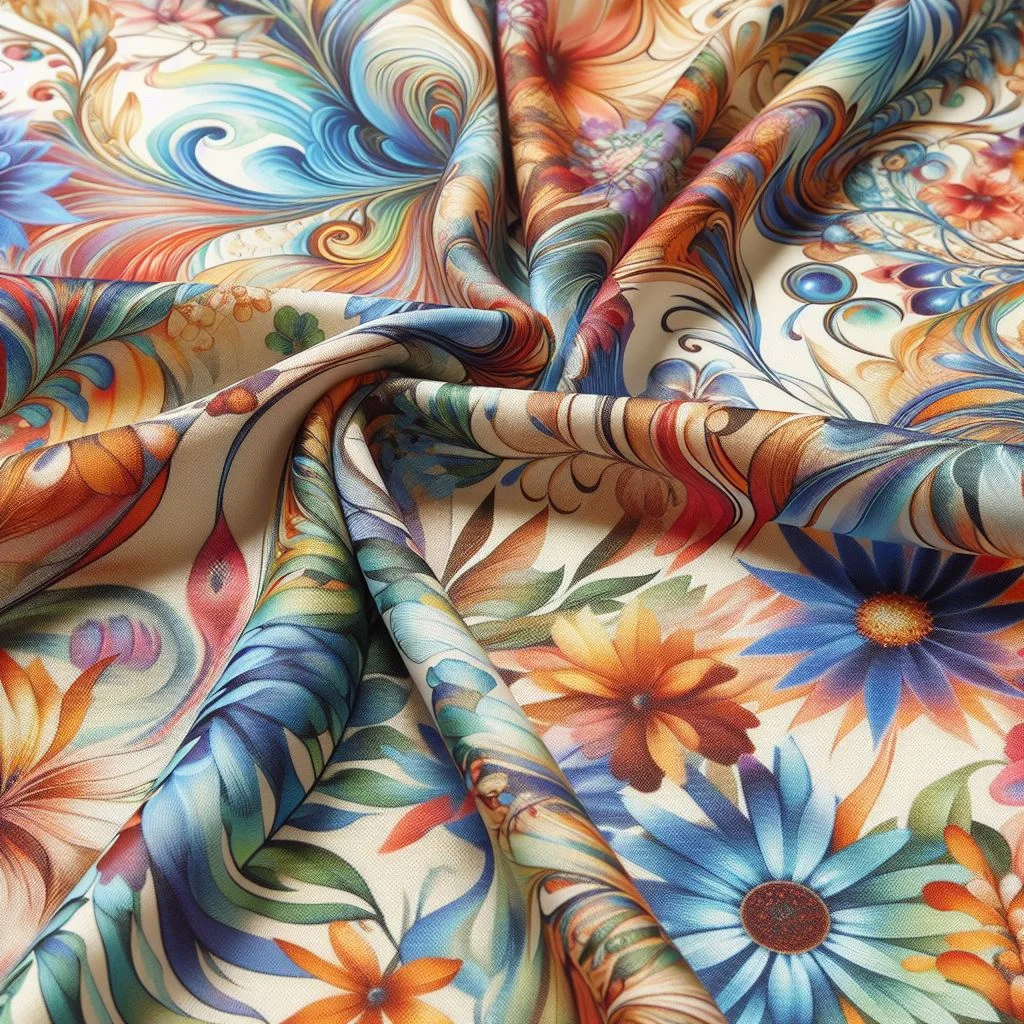
Sublimation on Rayon: Overcoming the Challenges
Sublimating on rayon isn’t as straightforward as on polyester. Rayon’s natural fibers don’t bond as well with sublimation dyes, which can cause fading, uneven colors, or even fabric damage at high heat.
Still, with the right blends, lower heat settings, and careful handling, you can pull off beautiful, detailed prints. The key is knowing how sublimation interacts with rayon differently than polyester.
Why Sublimation Behaves Differently on Rayon
Sublimation ink turns into gas under heat and pressure, bonding best with synthetic fibers like polyester. Rayon, while semi-synthetic, doesn’t have the same chemical structure to hold the dyes permanently. That’s why prints often fade faster unless rayon is blended with polyester or treated with a special coating.
Why Polyester Is the Go-To Fabric for Sublimation
Polyester stands out because it bonds perfectly with sublimation dyes, giving you bright, long-lasting prints. Here’s why it works so well:
- Molecular Bonding – Polyester’s synthetic fibers lock in sublimation dyes, making designs permanent.
- Vibrant Colors – The fabric absorbs dyes evenly, producing sharp details and bold hues.
- Durability – Prints stay strong through washing and wear without fading.
- Clean Transfers – No liquid phase means no bleeding, just crisp edges.
- Smooth Surface – A uniform weave helps capture fine details and high-resolution designs.
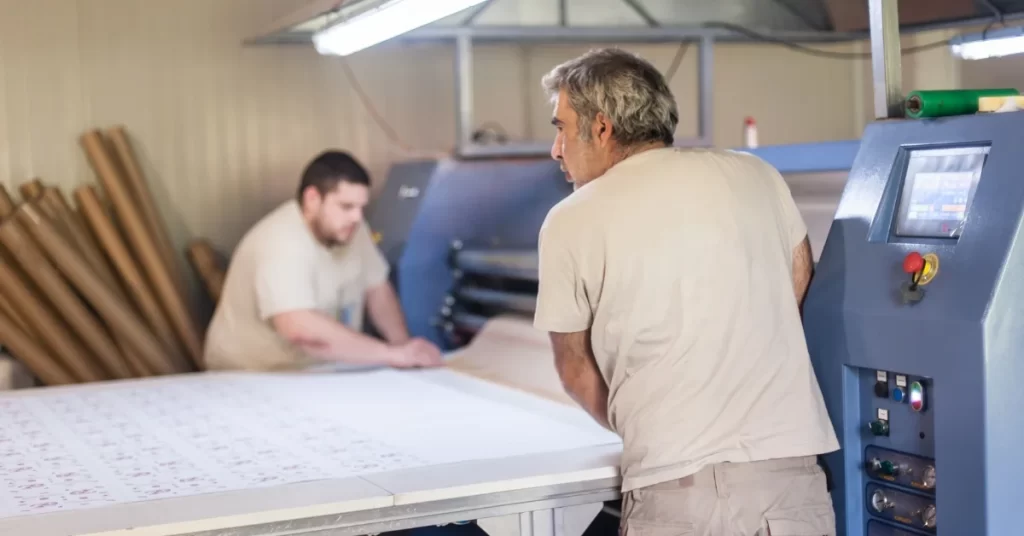
Can You Sublimate on Rayon?
Pure rayon isn’t ideal for sublimation, but polyester blends can work if the polyester content is high enough.
Sublimation works beautifully on polyester, but rayon is trickier. Rayon doesn’t bond with sublimation dyes the same way polyester does, so the results are usually poor.
Rayon’s Compatibility with Sublimation
- Why it’s difficult: Rayon is made of cellulose fibers, which lack the molecular structure that sublimation dyes need to bond.
- On 100% rayon: Prints look faded, often wash out quickly, and the heat press can scorch the fabric.
- On rayon-poly blends: Adding polyester changes the game. A blend with at least 60–70% polyester allows sublimation ink to stick, giving more vibrant, longer-lasting prints.
The polyester component provides the canvas for the sublimation dye to bond, while the rayon contributes to the fabric’s overall feel and drape.
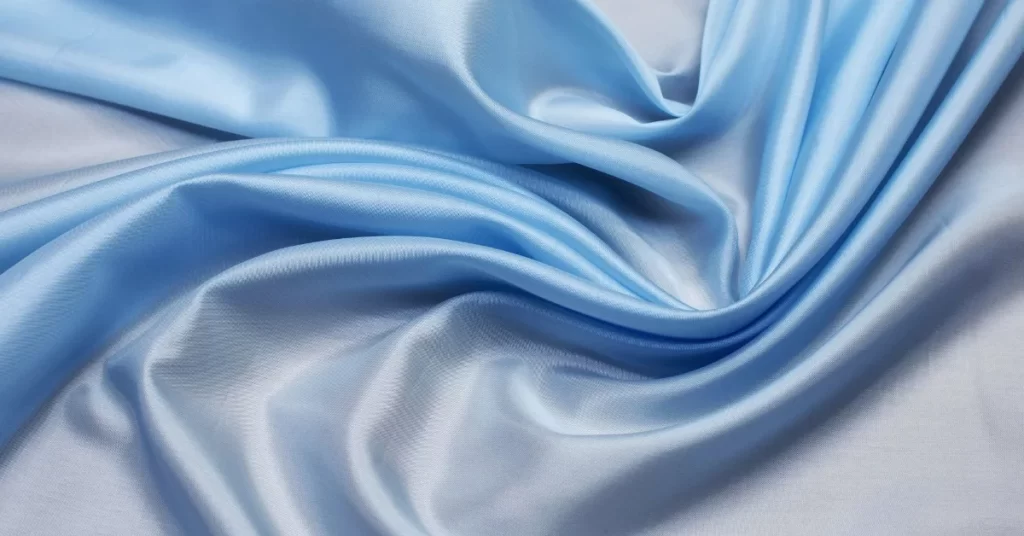
Specific Challenges and How to Address Them
With the right techniques and adjustments, you can expand your sublimation capabilities to include this luxurious and versatile fabric.
- Color Fading
- Challenge: Prints on rayon tend to fade more quickly compared to those on polyester. This is due to the lower affinity of rayon fibers for sublimation dyes.
- Solution: Use high-quality sublimation inks and transfer papers designed specifically for challenging fabrics. Pre-treating the fabric with a sublimation coating can also improve dye retention and vibrancy.
- Image Bleeding
- Challenge: The dye can spread beyond the intended areas, leading to blurred or smeared images.
- Solution: Adjust the heat press settings to a lower temperature and shorter duration. Conduct test prints to find the optimal balance that minimizes bleeding while achieving good color transfer.
- Fabric Damage
- Challenge: Rayon is more sensitive to heat and pressure compared to polyester, which can result in fabric damage or distortion during the sublimation process.
- Solution: Use a lower heat setting (generally between 350°F and 375°F) and reduce the pressure applied by the heat press. Ensure the heat press surface is clean and smooth to avoid imprinting unwanted textures onto the fabric.
- Durability Concerns
- Challenge: Prints on rayon may not be as durable or resistant to washing and wear as those on polyester.
- Solution: Educate customers on proper care for sublimated rayon items, such as washing in cold water, using mild detergents, and avoiding high-heat drying. Additionally, consider applying a protective coating to enhance durability.
- Inconsistent Results
- Challenge: Achieving consistent results on rayon can be difficult due to the fabric’s varying responses to sublimation.
- Solution: Maintain a controlled environment and consistent process parameters. Regularly calibrate your equipment and keep detailed records of successful settings and techniques.
Best Rayon Products for Sublimation
Always check the fabric tag. The higher the polyester content in rayon blends, the brighter and more durable your sublimation results will be.
- T-Shirts
Rayon tees feel lightweight and soft, which makes them a favorite for fashion brands. Go for poly-rayon blends if you want your sublimation prints to last longer and stay vibrant. - Scarves & Wraps
Because rayon drapes beautifully, it works well for scarves, shawls, and wraps. Sublimation looks best on lighter shades or blended fabrics, where the colors don’t fade as quickly. - Dresses & Tops
Casual dresses, tank tops, or flowy blouses made from rayon blends can take sublimation well, giving you colorful, breathable styles without sacrificing comfort. - Pillow Covers & Home Décor
Rayon and polyester mixes show up often in home textiles. Pillow covers, throws, or decorative accents can be sublimated with custom designs, monograms, or patterns for a stylish finish.
Alternatives to Sublimation on Rayon
Rayon doesn’t love sublimation, but these alternatives keep your designs looking sharp and long-lasting.
- Heat Transfer Vinyl (HTV)
Great for adding bold designs or text. HTV sticks to rayon without fading as fast, but keep the heat low so you don’t scorch the fabric. - Direct-to-Film (DTF) Printing
This method prints designs onto a transfer film and then presses them onto the fabric. DTF works well on rayon, giving you vibrant, flexible prints that last through washes. - Screen Printing
Old school but reliable. Screen printing lays ink directly on top of the fabric, so it doesn’t rely on fiber bonding. It’s a solid choice for larger runs of rayon apparel.
Troubleshooting Cheat Sheet for Sublimation on Rayon
Always test a small scrap first. Rayon reacts differently depending on the blend, and it saves you wasted blanks.
| Problem | Why It Happens | Quick Fix |
|---|---|---|
| Colors look faded | Rayon doesn’t bond well with sublimation ink | Use a polyester-rayon blend (65%+ poly) or apply a sublimation coating spray |
| Fabric scorches or shrinks | Rayon is heat-sensitive | Lower the press temp to 320–350°F and reduce press time |
| Print washes out after 1–2 washes | Low polyester content or pure rayon | Switch to blends or try DTF/HTV instead |
| Blurry or ghosted design | Fabric shifted during pressing | Use heat-resistant tape or reposition with light pressure |
| Uneven colors | Rayon absorbs moisture easily | Pre-press fabric for 5–10 seconds to remove moisture before sublimating |
Cost & Practicality: Is It Worth Sublimating on Rayon?
If you’re making a one-off fashion piece, rayon blends can work. But if you want consistent, vibrant, long-lasting prints, polyester is the smarter (and more cost-effective) choice.
- Polyester Wins for Vibrancy – Polyester blanks may cost a little more upfront, but the colors lock in perfectly and last for years.
- Rayon Adds Risk – Pure rayon prints often fade fast, scorch easily, or need coating sprays, which adds extra cost and effort.
- Blends Are a Middle Ground – Poly-rayon blends let you enjoy the soft feel of rayon with better sublimation results, but colors still won’t pop like 100% polyester.
Brief Comparison with Other Fabrics
Here’s how rayon stacks up against other common fabrics for sublimation:
| Fabric | Sublimation Compatibility | Print Quality | Durability | Special Considerations |
|---|---|---|---|---|
| Polyester | High | Vibrant, detailed prints | Very durable | Best option for sublimation, bonds perfectly with dye |
| Cotton | Low | Faded or washed-out prints | Less durable | Needs special coatings or sprays |
| Nylon | Moderate | Decent but less vibrant than poly | Moderately durable | Requires lower temps, can melt if overheated |
| Rayon | Moderate | High-quality, detailed prints (with care) | Moderate | Sensitive to heat, best in blends with polyester |

Polyester
✅ Best for sublimation

Cotton
❌ Needs coating

Nylon
⚠ Moderate results

Rayon
⚠ Works only with blends
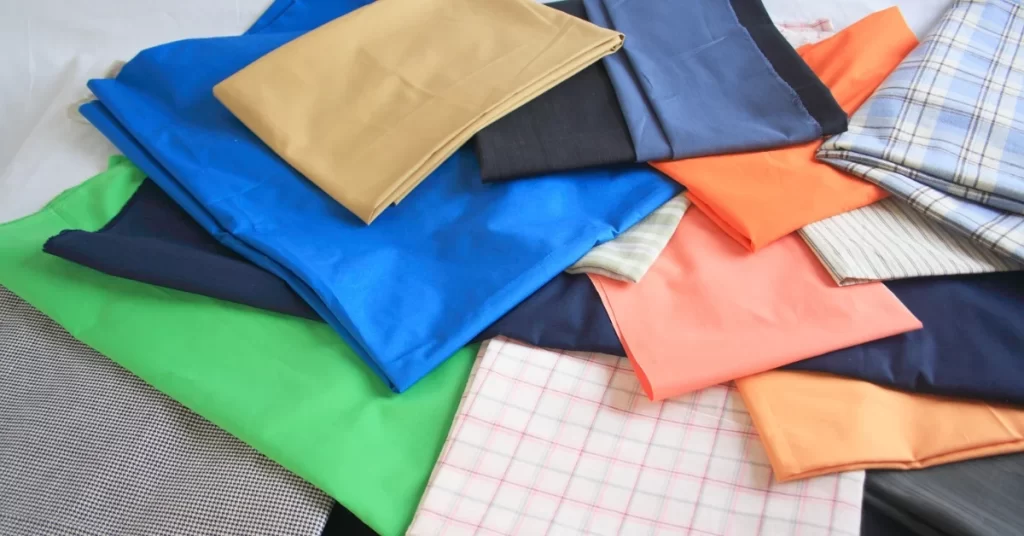
For more about the best fabrics for sublimation.
Techniques for Sublimating on Rayon
Sublimating on poly-blended rayon fabrics requires a delicate balance of temperature, time, and pressure to ensure a successful transfer without damaging the fabric.
Tips for Sublimating on Poly-Blended Rayon Fabrics:
- Fabric Composition: Ensure the fabric blend contains at least 65-70% polyester to facilitate better ink absorption and vibrant prints.
- Pre-Press: Conduct a brief pre-press to smooth out any wrinkles and remove moisture, which can affect the transfer process.
- Protective Measures: Use a protective paper or Teflon sheet to shield the rayon from direct heat and prevent scorching.
Temperature and Time Adjustments:
- Lower Temperature: Start with a lower temperature of around 375-385°F (190-196°C), which is sufficient to transfer the dye without overheating the rayon.
- Shorter Press Time: Begin with a shorter press time and gradually increase if necessary. A good starting point is 30-45 seconds, depending on the thickness of the fabric.
- Test Runs: Always test on a scrap piece or a small, inconspicuous area of the garment first to fine-tune the settings.
Pressure Settings:
- Light to Medium Pressure: Apply light to medium pressure on the heat press. Excessive pressure can flatten the texture of the rayon and affect the quality of the print.
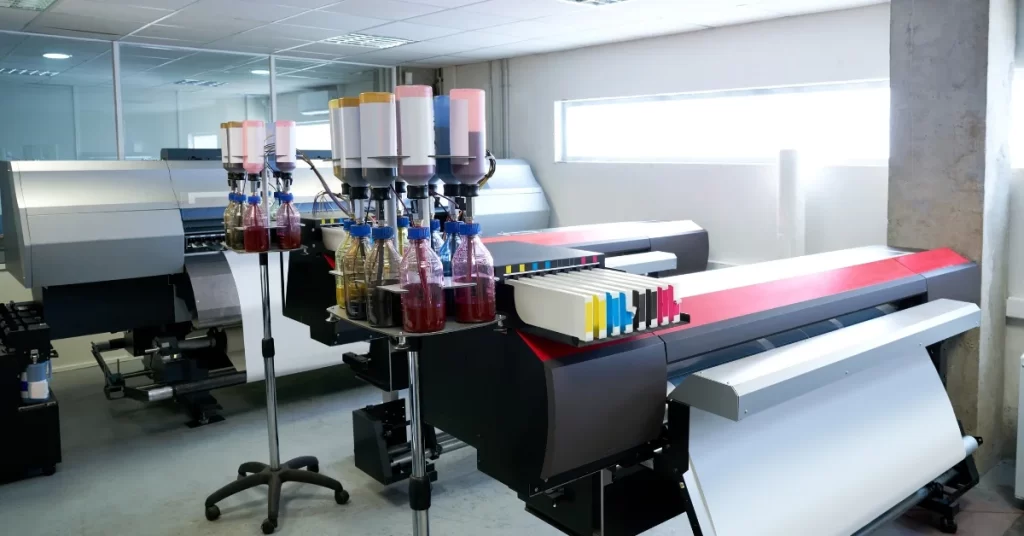
Polyester-Rayon Blends for Enhanced Outcomes
By understanding the unique properties of polyester-rayon blends and applying best practices, you can achieve enhanced sublimation outcomes. These blends offer a great balance of quality, comfort, and durability, making them an excellent choice for various sublimation projects.
Blended Fabrics: Advantages and Techniques
Blended fabrics combine the best attributes of different fibers to create a material that is both practical and aesthetically pleasing. Polyester-rayon blends are particularly advantageous for sublimation printing, offering a balance between the vibrant print quality of polyester and the softness of rayon.
Benefits of Using Polyester-Rayon Blends
- Enhanced Print Quality: Blends that include a significant percentage of polyester tend to hold sublimation dyes better than pure rayon. This results in more vibrant and detailed prints.
- Improved Durability: Polyester’s synthetic fibers contribute to the overall strength and resilience of the fabric, making it more durable and resistant to wear and tear compared to 100% rayon.
- Softness and Comfort: Rayon adds a softness and drape to the fabric that pure polyester lacks, making garments more comfortable to wear.
- Versatility: Blended fabrics can be used for a wide range of applications, from fashion and accessories to home décor, offering versatility in both use and design.
Best Practices for Sublimation on Blends
- Optimal Polyester Content: For the best sublimation results, choose blends with at least 50% polyester. Higher polyester content typically yields better print quality.
- Heat Press Settings: Adjust the heat press settings to account for the blended nature of the fabric. Start with a temperature of around 375°F and a pressing time of 45-60 seconds. Adjust as needed based on test prints.
- Pre-treatment: Although not always necessary, pre-treating the fabric with a sublimation coating can enhance dye absorption and print clarity, especially if the rayon content is high.
- Consistent Pressure: Apply even pressure across the entire fabric surface to ensure uniform dye transfer. Use moderate pressure to avoid damaging the fabric, particularly with blends that include spandex or other stretchy fibers.
- Test Prints: Conduct test prints on a small section of the fabric to determine the optimal settings and make adjustments as necessary. This helps in achieving consistent and high-quality results.

Examples of Polyester-Rayon Blends
- 95% Rayon, 5% Spandex
- Advantages: This blend is exceptionally soft and stretchy, making it ideal for garments that require a lot of movement, such as activewear or loungewear.
- Sublimation Tips: Use lower temperatures and shorter pressing times to avoid damaging the spandex. Consider pre-treating the fabric to improve dye uptake.
- 50% Polyester, 25% Cotton, 25% Rayon
- Advantages: This blend combines the strengths of all three fibers, offering good print quality, softness, and breathability. It’s commonly used for t-shirts and casual wear.
- Sublimation Tips: Since this blend includes cotton, which does not absorb sublimation dye well, expect more muted print results. Using a polyester-heavy design can help maintain vibrancy.
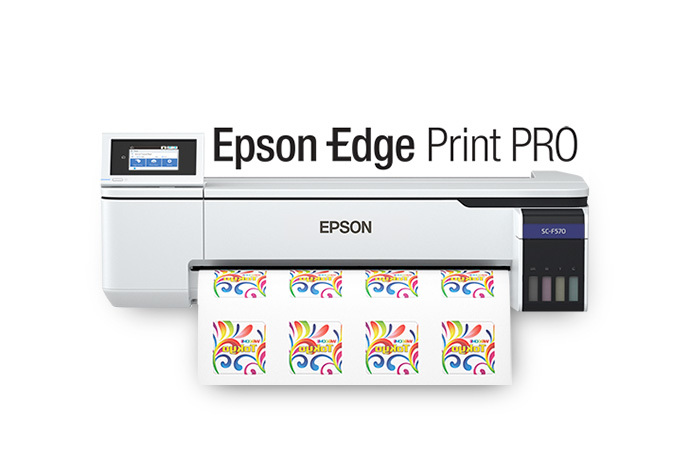
Selecting the Best Transfer Paper for Rayon:
- Paper Weight: Choose transfer paper with a weight of 90-110 gsm. This weight range is ideal for handling without tearing and ensures even dye transfer.
- Coating Quality: Look for transfer papers with a high-quality coating that can hold the sublimation dye without bleeding or smudging. The coating should also release the dye effectively during the heat press process.
- Size Compatibility: Ensure the transfer paper size matches your printer’s capabilities and the size of your design. Wide-format papers are available for larger projects.

Recommended Transfer Papers:
- A-SUB Sublimation Paper: Known for its excellent dye release and vibrant color output, A-SUB paper is compatible with a wide range of sublimation printers and inks.
- TexPrint R: This paper is specifically designed for high-quality dye sublimation and offers superb color transfer, making it ideal for detailed designs on rayon.
- Siser EasySubli: Suitable for both hard and soft substrates, Siser EasySubli paper provides consistent results and vibrant prints, perfect for rayon fabrics.
Tips for Avoiding Common Paper Issues:
- Storage: Store transfer paper in a cool, dry place to prevent moisture absorption, which can affect dye transfer quality.
- Handling: Handle the paper with clean, dry hands to avoid transferring oils or dirt onto the paper, which can impact print quality.
- Printing: Ensure the printer settings are correctly configured for sublimation printing, including the right paper type and print quality settings.
- Heat Press Settings: Follow the manufacturer’s recommendations for heat press temperature, pressure, and time to ensure optimal dye transfer and avoid issues like ghosting or incomplete transfers.
Subli Genius Print also discussed specific techniques to prevent damage to rayon during the sublimation process, such as adjusting temperature and time settings and the importance of conducting test runs.
Real-Life Success Stories
Case Study 1: Saghir’s Custom T-Shirt Company
Saghir, the owner of a custom t-shirt company, decided to experiment with a 70% polyester, 30% rayon blend for his sublimation projects. The result was impressive: the blend provided vibrant, long-lasting prints that exceeded expectations. Saghir found that this specific ratio of polyester to rayon offered the perfect balance of heat resistance and ink absorption, leading to high-quality, durable designs that delighted his customers.
Case Study 2: Naseer’s Online Craft Community
Naseer, a member of an online craft community, achieved notable success using a 65% polyester-rayon blend. Despite the slightly lower polyester content compared to other blends, Naseer reported that the fabric still delivered satisfactory color vibrancy and print durability. The community appreciated the blend for its ability to maintain good print quality while offering a softer feel, making it a popular choice for various craft projects.
Common Issues and Solutions:
- Issue: Scorching of Rayon Fabric
- Solution: Lower the heat press temperature and use a protective sheet to prevent direct contact with the fabric.
- Issue: Fading or Washing Out of Prints
- Solution: Ensuring a high polyester content in the blend, ideally above 60%, to improve ink binding and print longevity.
- Issue: Inconsistent Results Across Different Batches
- Solution: Testing each batch of fabric before full production, as the composition of rayon can vary between manufacturers.
Post-Printing Care for Sublimated Rayon
Proper care is essential to prolong the life of your sublimated rayon items. Here are some guidelines:
- Allow Curing Time: Let the fabric rest for at least 24 hours after the sublimation process to ensure the ink fully sets.
- Gentle Washing: Use cold water and a mild detergent. Turn the garment inside out to protect the print. Avoid bleach or harsh chemicals.
- Drying: Hang dry the fabric to prevent shrinkage and maintain the print’s quality. Avoid using high heat in the dryer.
- Ironing: If necessary, iron on the reverse side of the fabric using a low-temperature setting. Avoid ironing directly on the print.
- Storage: Store your sublimated rayon items in a cool, dark place to protect the colors from fading.
Resources:
- Sublimation for Beginners: A comprehensive guide to starting with sublimation printing, covering everything from the basics to more advanced techniques.
- Sublimation Tutorials and Videos: A collection of free tutorials perfect for both beginners and experienced users looking to refine their skills.
- The Complete Guide to Sublimation Printing: An in-depth look at the sublimation printing process, including discussions on printers, inks, papers, and more.
- Free Sublimation Designs & Images: A treasure trove of free sublimation designs and images to download and experiment with, ideal for testing and honing your craft.
- Best Sublimation Software: An overview of the top sublimation design software available in 2024, both free and paid options.
References
T-Shirt Forums. “Sublimation on Rayon/Poly Blend.” Retrieved from T-Shirt Forums.
